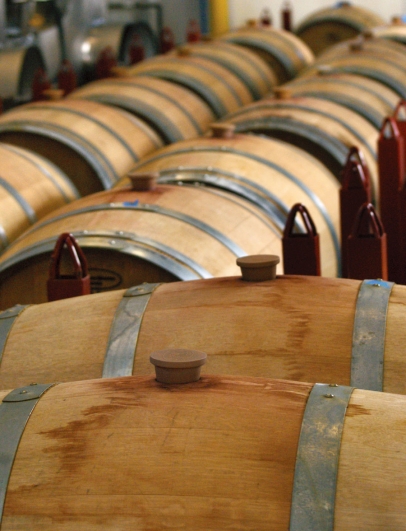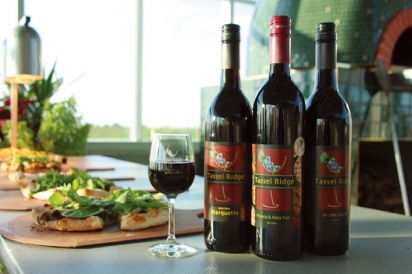A Visit to Tassel Ridge
The Leighton winery is one of the biggest in the state
The lilacs were blooming at Tassel Ridge Winery this spring when I drove out to speak with owner Bob Wersen. Located near Leighton, between Pella and Oskaloosa, the gently rolling hills on which the winery and one of the vineyards sit is prime row-crop country. Among the best Mahaska county has to offer. At the current prices for corn and beans, however, grapes are clearly the better investment.
Bob and his wife Sharman are California transplants. Bob smiled as he told me that he found it ironic that while a great many Iowans dream of moving to wine country and opening a vineyard, it’s unlikely that any Californians dream of moving to Iowa to do the same.
Historically, Iowa had once had significant grape and wine production. According to the ISU Extension Office, Iowa ranked eleventh in grape production in the United States in 1899, and sixth in 1919. The 1900 U.S. Agricultural Census showed that Iowa produced 7,403,900 pounds of grapes and 76,301 gallons of farm-processed wine. Three factors are generally considered to have caused the decline of the grape and wine industry in the 1940’s, including the use of 2,4-D herbicide on corn and pastures during that decade, the Armistice Day Blizzard on November 11, 1940, that also decimated Iowa’s apple crop, and the general trend to more row crop production.
The wine industry in Iowa, and indeed, in the entire nation, is coming back. When most people think wine, they think of California. Yet, grapes are now grown in all 50 states. Growth in Iowa has been particularly strong. In the year 2000, there were only 30 acres of grapes grown for wine production. There are now 100 wineries in Iowa, and 1200 acres of grapes.
In the nine years that Tassel Ridge has been in operation, it has grown to be one of the largest wineries in Iowa. Tassel Ridge produces approximately 180,000 bottles of wine a year, and has the capacity to make 220,000. The wine is distributed in about 400 retail outlets in Iowa, and the goal is to produce fine wines from grapes grown in the area. Bob says that they make 35 different wines, which is too many. Some of those wines were created because they couldn’t grow enough grapes when they first started, so imported grapes were used. Plans are to phase some of those wines out. Bob says their mission is to make fine wines from grapes grown in the area.
I asked Bob about the wine-making process. He says that for whites or rosés, the grapes are harvested and crushed, and the juice is then fermented. For red wines, the seeds, skins, stems and juices are fermented together. This mixture is called must.
The juice or must, depending on the variety, is then pumped into tanks, and inoculated with a commercial yeast. The yeasts are selected based on the characteristics desired in the wine. Fermentation of a red wine takes about a week, and whites and rosés take about two weeks. Fermentation is at about 60 degrees for white wines, and 70 for reds. Stainless steel jackets on the tanks are used to help regulate temperatures. The jackets create a gap around the tank where they can pump a mixture of propylene glycol and water to lower the temperature as needed.
I suggested to Bob that the long history of winemaking suggests that the technology needn’t be complex. He paused for a moment, then said, “sure, but technology makes it a lot easier to make a good wine. Historically, a lot of bad wine has been made.” He added that the earliest wines were made in what is now the country of Georgia, and the wine was fermented in amphorae buried in the ground with ground temperatures averaging 58 degrees.
The variety of grapes that can survive our harsh climate and produce in our short growing season are called the northern climate varieties, developed by researchers in Minnesota or Wisconsin. Among the varieties Tassel Ridge grows for red wines are Frontenac, Marquette, St. Croix, Steuben and Sabrevois. St. Croix, La Crescent, Brianna, and St. Pepin are used for whites and rosés.
But Tassel Ridge is doing more than making wine. It’s also building community, and participating in an increasingly important effort to intellectualize our food and drink. There are dinners that pair good foods and wine, gallery exhibits, and a recent addition to the winery of a full time chef and a wood fired pizza oven. Bob says the pizza is a particularly good foil for the red wines—and that the old adage holds true that the right wine and the right food served together make both taste better. In fact, he adds, that is the winery’s mantra. Clearly, Tassel Ridge isn’t just making wine, they are making experiences, and building a community based culture around wine.
Bob is pleased with the economic contribution the winery makes to the area as well. They are seeing significant growth in tourism, and are approaching 20,000 visitors per year. These visitors shop, eat out, stay in area hotels and help grow the local economy. While he doesn’t have specific numbers for Tassel Ridge’s contribution to the local economy, he says that the most recent data available—from 2012—show that the 100 wineries in the state generate collectively 2.34 billion in total economic benefit to the state economy.
As we were wrapping up our conversation in the tasting room, and getting ready for Bob to show me the new wood fired pizza oven, Bob told me that locals took great pride in the winery, and regularly brought visitors from out of state, to show off the winery and enjoy some wine. Almost as if on cue, I spotted Katie, a friend from Pella sitting with another woman, each enjoying a glass of wine. We went over to chat, and sure enough, Katie’s friend was from out of state, and Katie was showing off the winery. “We had to come to Tassel Ridge!” she said.
Visit TasselRidge.com for location and tour details






